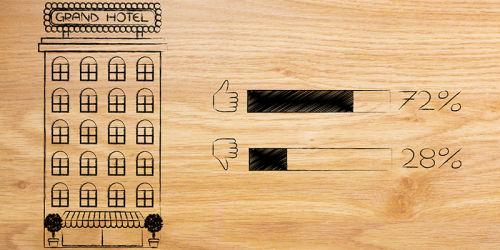
Congratulations! You’ve booked the perfect hotel. On a quiet street close to the city, with secure parking, a café downstairs, and $50 per night cheaper than the hotel across the street. As you check-in, you’re asked if you would like to park downstairs, if you’d like breakfast in the morning, and if you want the Wi-Fi password. You agree—but without first reading the fine print.
On checkout, you leave to a nasty surprise. You've been charged an extra $50 per night for add-ons, and another $10 for the afternoon you used the hotel pool. The real kicker? At the hotel across the street, all of these would have been free.
Behavioural economists call these shrouding attributes—hiding or disguising some element of the price. By shrouding part of the price or stripping out core components of the service, companies can compete for your business by presenting the lowest possible prices. This is an example common in Behavioural Contract Theory, which applies behavioural insights to the design of formal and informal agreements.
This type of misleading practice is much more common than you might think. For example, picture an ad for a new credit card. In great big letters you might see "0% on balance transfers" or a promise of frequent flier points. In smaller font towards the bottom you might see that the card has an interest rate of 17.99 per cent and, in tiny print at the very bottom, that there is a $300 annual fee.
To find out what happens if you overdraw your account, you have to go to the bank or its website and search. Sometimes, finding this important information can be nearly impossible. Often the card you choose will not be the best value—because you do not have enough information to make the perfect decision.
To better understand shrouding attributes we need to consider how ‘costs’ work. Costs can be divided into three components: a base cost (which companies advertise), a surcharge (an unavoidable extra cost), and an add-on component, which is avoidable. For example, a printer would be a base cost, enough ink to print most things in black ink would be the unavoidable surcharge, and the extra cost of printing in full colour would be the avoidable add-on component.
In a perfect (or perfectly competitive) world, companies would compete based on all cost components. For example, hotels could advertise their Wi-Fi fees, letting their customers make a more informed choice. Unsurprisingly, almost none do. Some industries, such as banks, are required to present a comparison rate which accounts for fees, yet may still shroud the specific costs.
The general consensus is that there is no incentive for companies to actually educate consumers.
Behavioural economics tells us people are attracted to the first price they see, but if companies are likely to shroud information, the best solution is to educate yourself. Make a list of what is important to you about a product, then actively look for information about extra costs so that you are able to compare. Use compare websites, seek out reviews from other customers, look at satisfaction ratings and check the fine print—you might just save yourself some travel money!

